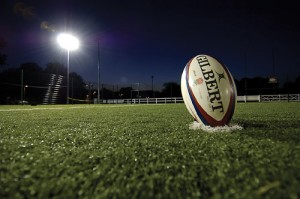 Rugby Training Regime: Part 2
Rugby Training Regime: Part 2
We all know how physically demanding rugby can be. Getting your body conditioned for the start of the season can be a gruelling mix of muscle building in the gym, working on that explosive yard on the pitch, ball work and tackling. Once the season starts it may feel like the hard work is done, but in reality you’re just getting started. Your body might appear to be in perfect condition, but you have to keep it that way.
Don’t forget the things you were doing before the first competitive ball was kicked. If you relied on products such as whey protein to get your body conditioned, don’t stop when the season starts. You’re not there yet. It’s a continuous process you need to keep working on to maintain that level of fitness.
Take a look at our guide of rugby training tips to keep you fit and firing all season long.
Proper tackling technique
As a sport that involves hard contact between bodies when tackling, it’s difficult to completely eliminate any form of injury. However, what you can do is work on your tackling technique and avoid dangerous tackles to try and minimise the potential risk of injury. Try and ensure you avoid hitting the ball carrier at shoulder level as this will reduce the chance of head-to-head contact. It’s important to keep your chin off your chest; your eyes open and be aware of the general play around you. Always work on this in training and it will really start to benefit you during matches.
Consider balance and proprioception training
Maintaining your strength and endurance throughout the season is vitally important. You’ll want your muscles to grow, and to continue to improve on your stamina, endurance and power. Accordingly products such as creatine may enable you to do that and potentially improve on your performance. However, you also need to think about your balance. In such an explosive sport this is vital.
Lateral ankle sprains are common injuries amongst professional rugby union players. However, most occur in non contact situations and are down to a lack of balance on the part of the player. Incorporating a training programme which works on both balance and proprioception is one of the best ways to try and reduce this happening.
Think about going to ground when carrying the ball
The circumstances where a ball carrier is tackled from the side or behind and tries to continue running can possibly lead to knee, leg or ankle injuries. If you go to ground when you feel the weight of a tackler, this could minimise the potential injury impact. You may not gain the valuable yards during the game, but you may avoid a long lay-off during the season. Try and work on this in training.
Fully recover from injuries prior to returning to play
In a sport that involves such contact and collisions it’s imperative to ensure that you are fully fit before taking the field. If you’re carrying an injury, however moderate you may view it you’ll be under an increased chance of suffering from another knock which could end up being much more serious. Getting proper rest and recuperation is vital after playing rugby and so when you’re injured this is even more important. Make sure you not only heal from your injury, that you also recover the full range of motion and strength and have completed full training prior to returning.





